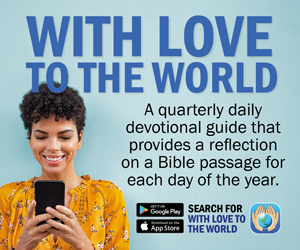Learning, speaking and listening to a language that is not your “mother tongue” is not easy.
I experienced this during ten years in Papua New Guinea. With the growing number of people in our churches born overseas, and for whom English is a second language (ESL), I have been asking myself “Is the New Revised Standard Version (NRSV), the best version for them to hear (and read)?”
Most people who attend church do not read the Bible. The only time they hear it is when it is read during a church service. It is important therefore that they understand what they are hearing. They may never come across it again. Priority should be given to those for whom English is an acquired language when choosing which English version to read during church worship.
Earlier versions
The English King James Version of the Bible (KJV), published in 1611 was, for over 250 years, the most widely read version at Protestant English services. It is what can be called a “word-for-word” translation. It follows the form and grammar of the Hebrew and Greek text from which it was translated.
The KJV was followed by the Revised Version (RV), and the Revised Standard Version (RSV). Then came the New Revised Standard Version (NRSV) in 1989, the version recommended for use by Uniting Church. It has the advantage of using inclusive language where the context warrants and sounds somewhat similar to those earlier versions which people are used to hearing. However sometimes its words and word order are awkward because it is translation using the word-for-word approach.
If easy comprehension is important, especially for speakers of acquired English, then there are better alternatives. I suggest two.
Good News Bible
In 1976 the American Bible Society published the Good News Bible (GNB). Later it was revised with inclusive language.
The beginnings of the Good News Bible can be traced to requests made by people in Africa and the Far East for a version of the Bible that was easier to read than the KJV. In other words, its original target audience was people for whom English is a second language, like many in our congregations today. The GNB is written in simple, everyday language.
However its major difference was that it used a new translation theory which can be called “thought-for-thought” rather than “word-for-word”. It aimed to make the text as readable as possible for a modern audience. This translation method not only revolutionised Bible translation but established translation as an academic discipline in its own right.
Contemporary English Version
The Bible Societies released the Contemporary English Version (CEV) in 1995, also using jargon-free English. While this translation is sometimes perceived as a replacement for the GNB it was not intended as such.
The CEV is based on good scholarship. It is a simplified version of the Bible for children and adults with a lower literacy rate. Before translation began much research was done on speech patterns used in books, magazines, newspapers and television, that is, on how English is read and heard. Further studies focused on children, people on the street, people not familiar with biblical concepts.
The thesis tested
The idea of exploring this subject I think grew out of my overseas experience together with the observation of the growing number of non-native English speakers attending services in our local congregation. I often wondered “Do they understand what they are hearing?” I presented the idea to our Worship Committee and offered to test my thesis.
ESL speakers were given three passages of Scripture, each about 3 verses long, from both the NRSV and CEV and asked “Which passage is easier to read and understand?” Early in the process I formed the view that young children (primary age) should also be included.
The results staggered me. Of the ESL speakers 90% found the CEV easier to understand. Most of the ESL speakers do not speak English in the home. All the children found the CEV easier to understand.
One ESL speaker said that she liked to learn more difficult words and improve her spoken English, but then added, “ But when listening, or being spoken to, I prefer simpler English and slower speech.” I particularly resonated with that statement, remembering my own difficulties in trying “to hear’ another language.
Conclusion
We are more than ever a multi-cultural society, The people who attend our churches are changing and that is good. My aim in this exercise is improving communication.
Earlier this year when the CEV was read in a number of services in our congregation (Gungahlin ACT) my observation was that they appeared to be read more fluently and with more expression than when the NRSV was used. This is not surprising given that the CEV translation has tried to follow more closely the way people normally speak rather than the NRSV which follows more closely the word order of the original Bible languages.
My good friend Basil Rebera, retired Bible Society translation consultant, has solidly supported me in this exercise with technical advice and practical ideas. He told me “The word-for-word approach to translation no longer has support in the field of communication and translation.”
However this does not mean that the NRSV is not useful. It is certainly helpful for those wishing to make a detailed study of the Bible and have an understanding of how original Hebrew and Greek are structured. But it is not ideal for public reading.
The Assembly Worship Working Group, while supporting the use of NRSV, says that “In a community whose members have different first languages, the use of simpler or plainer English texts can be a helpful way not only to help individuals encounter the word but also hear the word differently.” They recommend “the CEV for its scholarship and approach to translation” suggesting it is “helpful in settings with multiple language groups.”
The English Bible Society says that versions translated in the though-for-thought style of the CEV are best for the public reading of Scripture. Changing the version for public reading is a practical way of giving expression to the Uniting Church ethos of “inclusivity”, in this case, ESL speakers and children.
Of course, this whole exercise implicitly reminds us to be more conscious of the words and vocabulary we use than ever before. Liturgies, prayers, and notices should all be user-friendly.
I suggest the choice for public reading should be between GNB and CEV. However it is of no help whatever if the version chosen is not read well.
Rev. Ron Reeson













